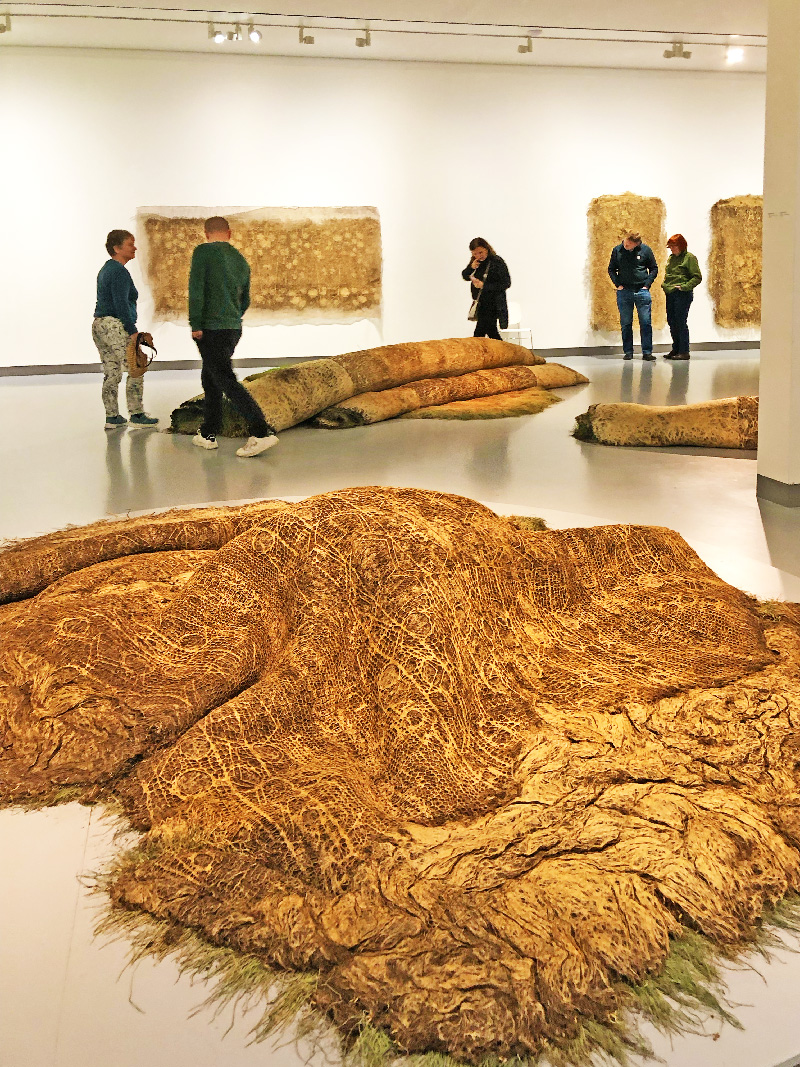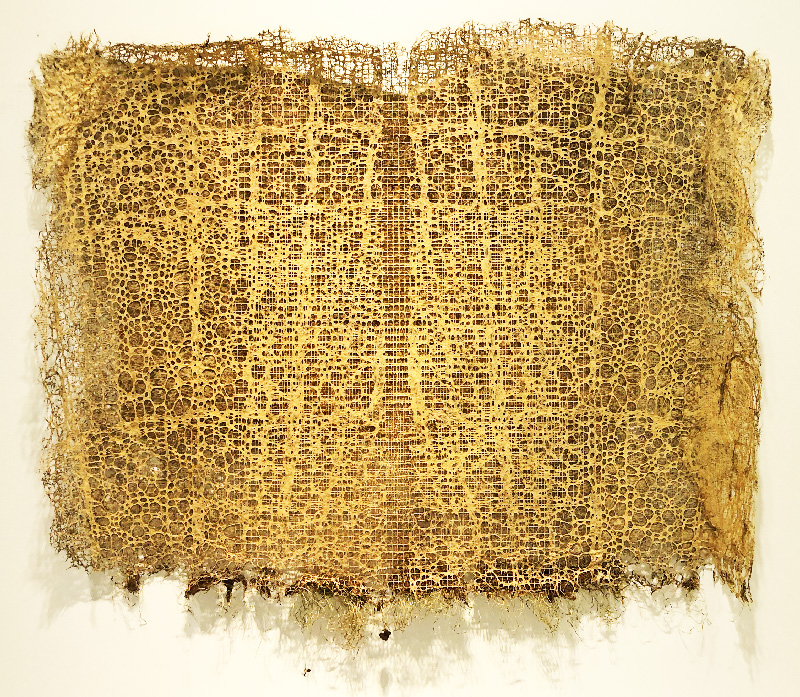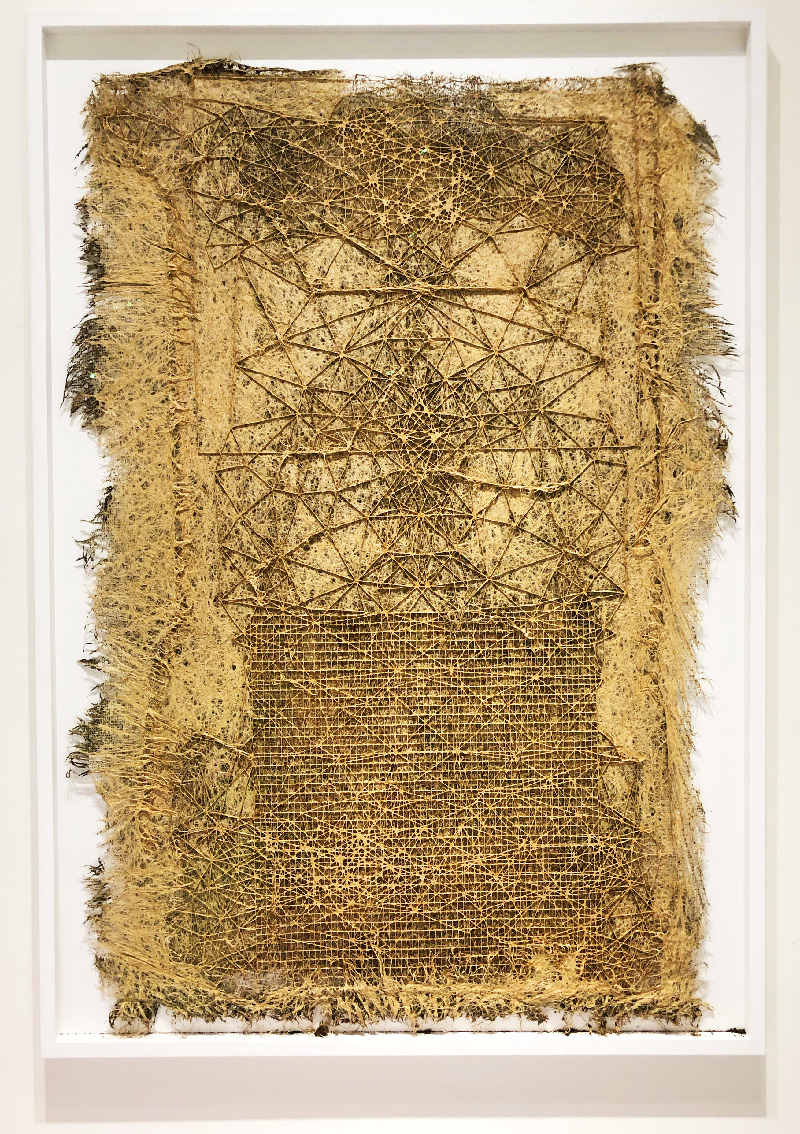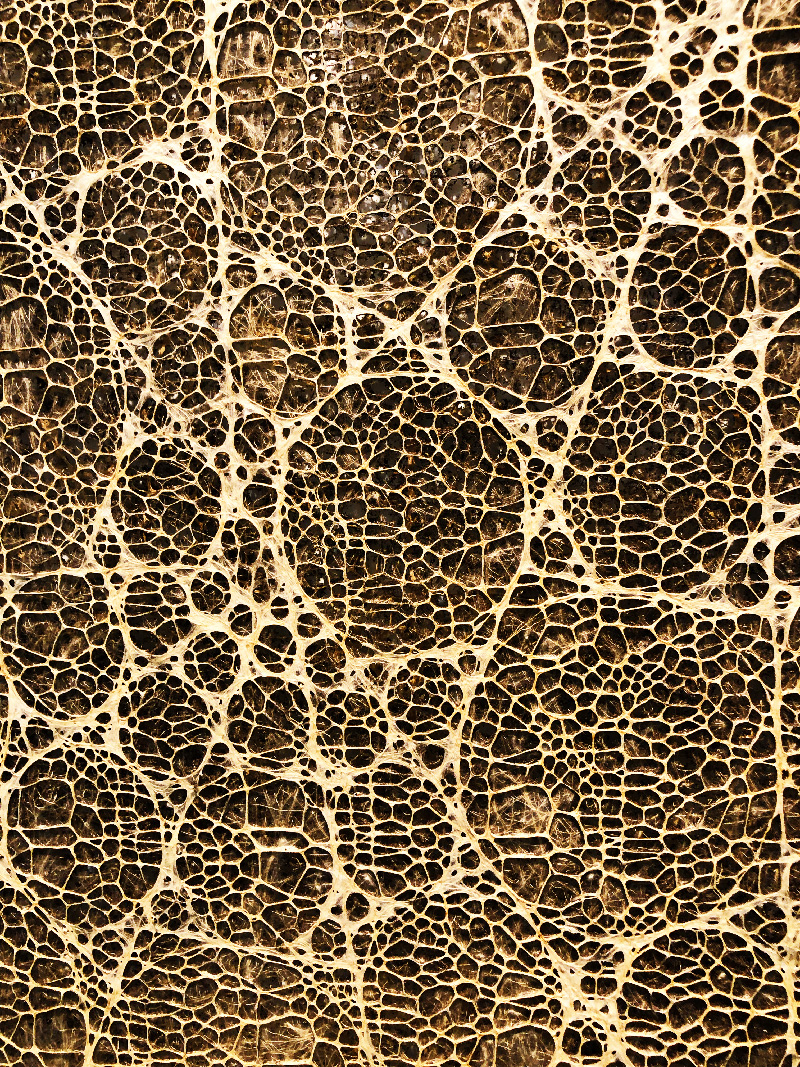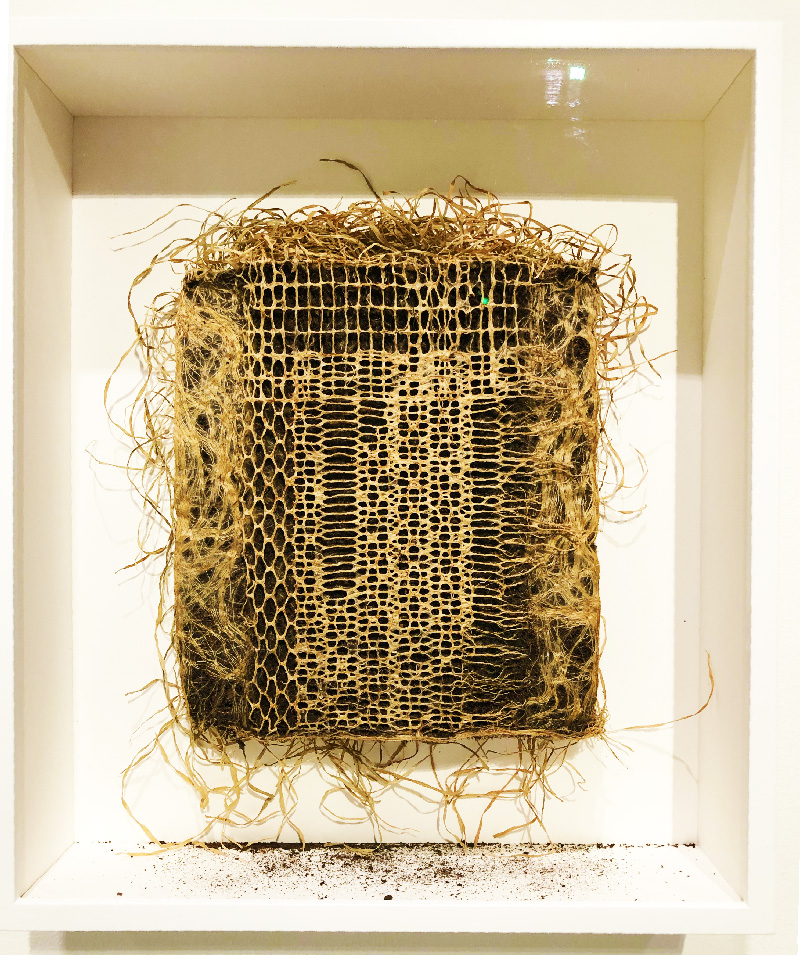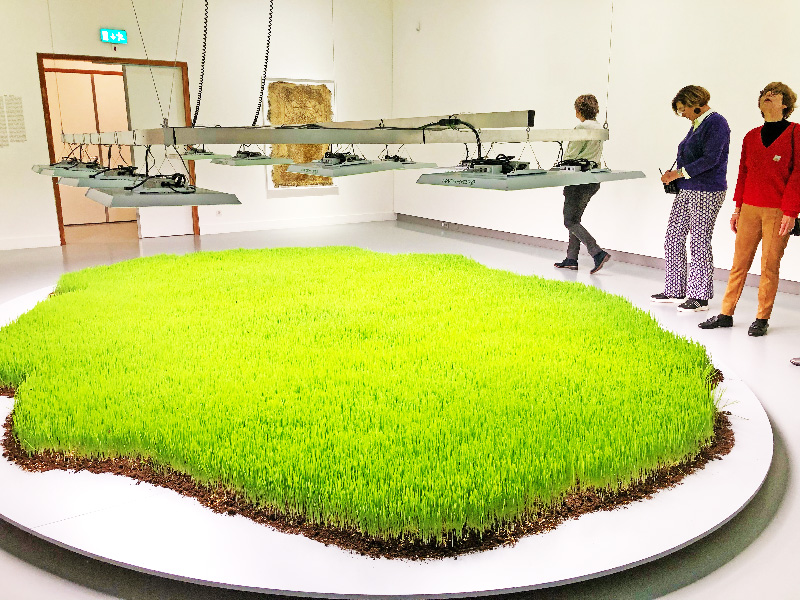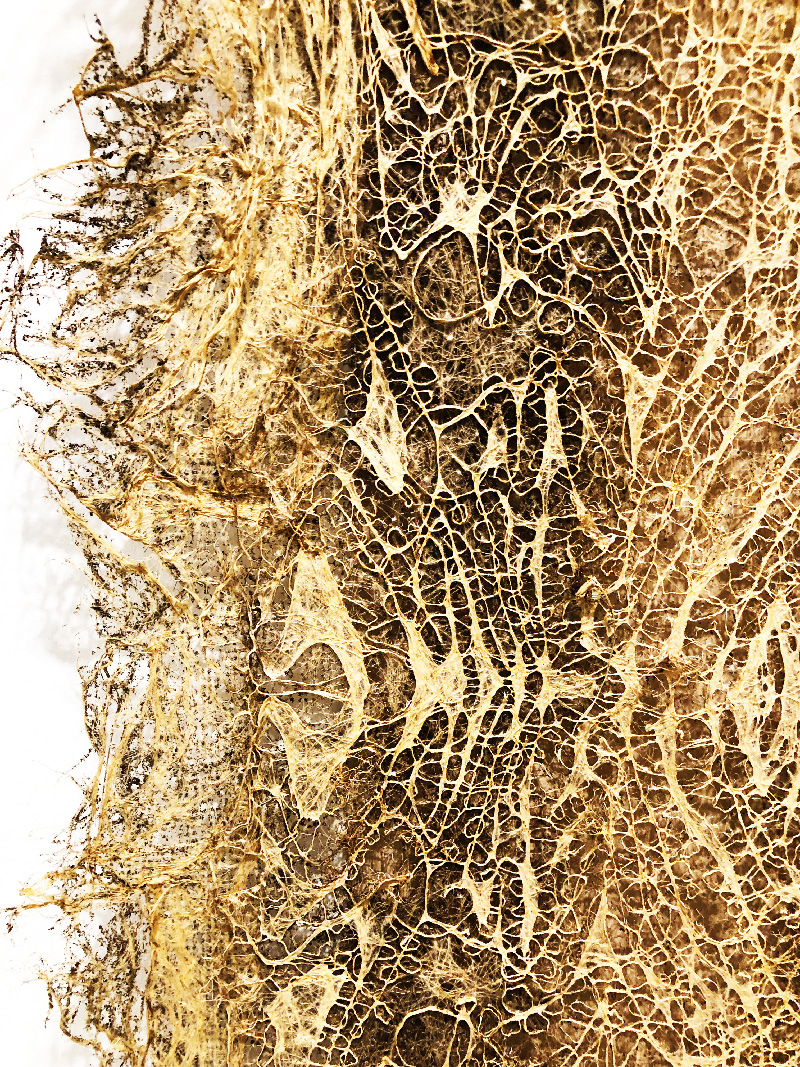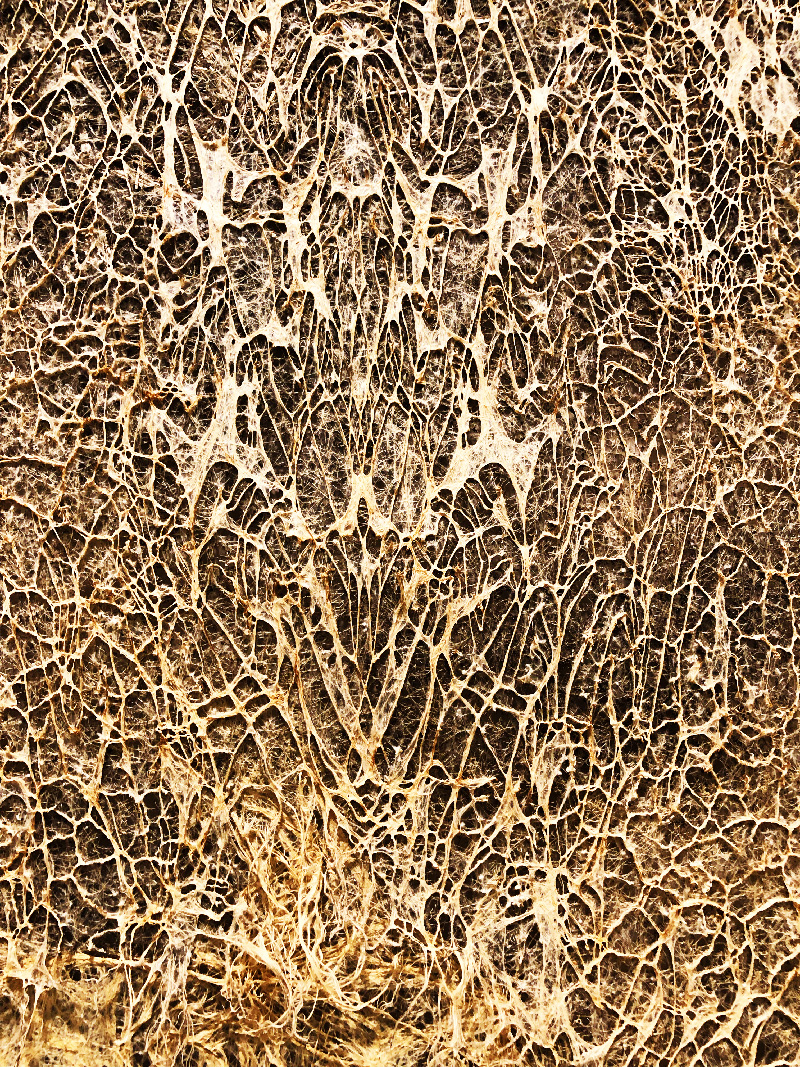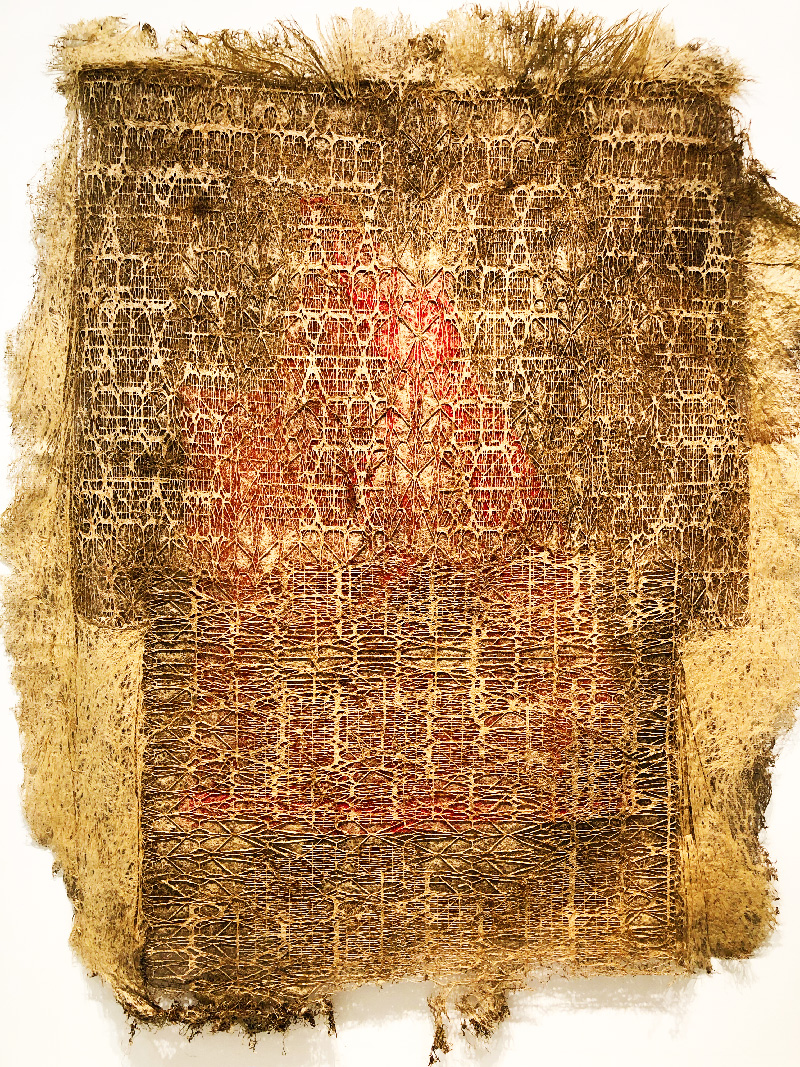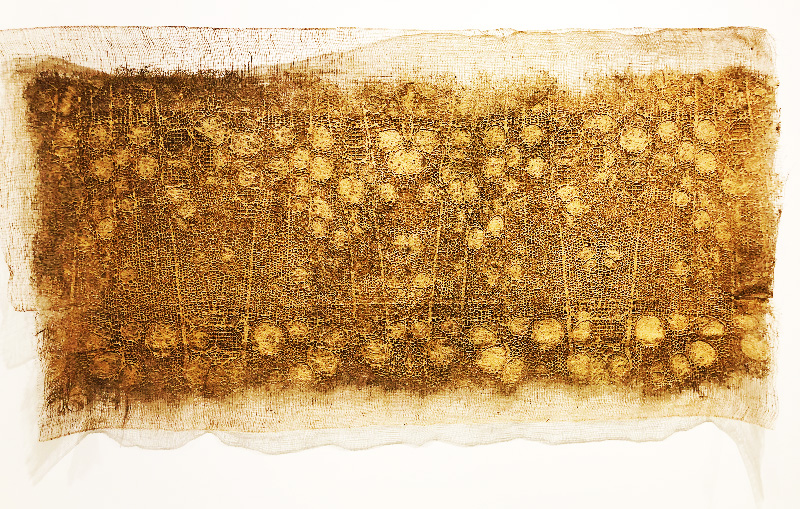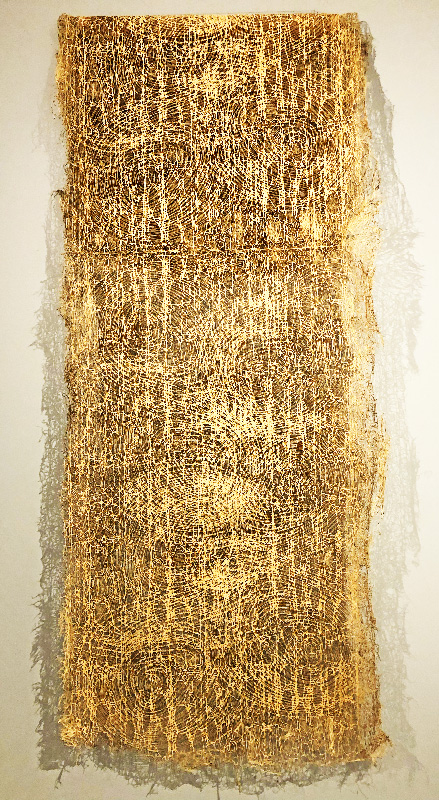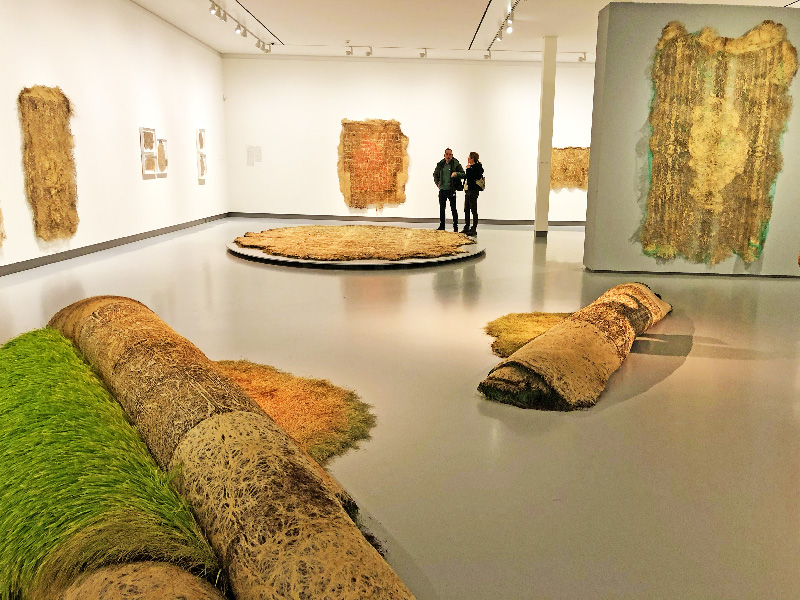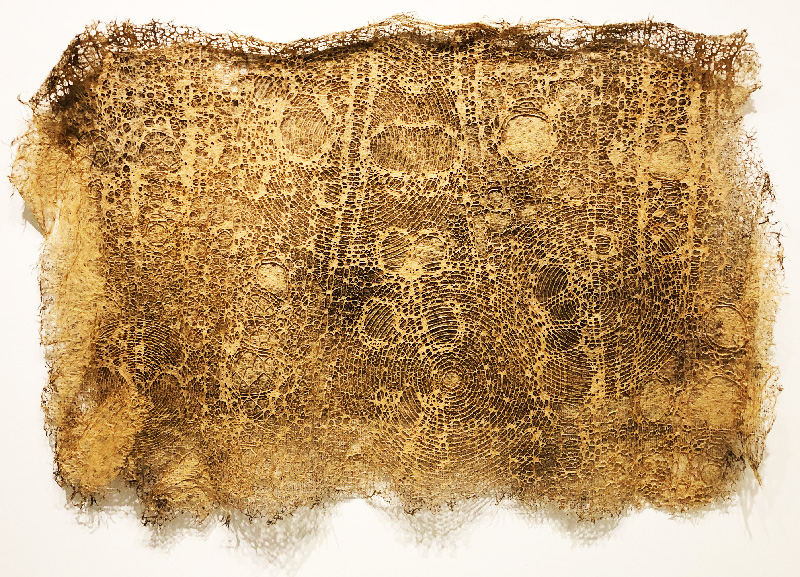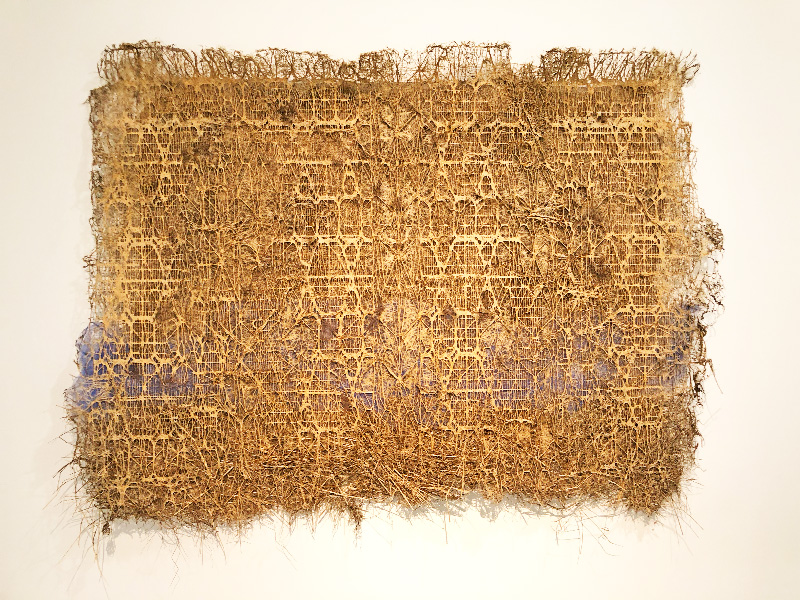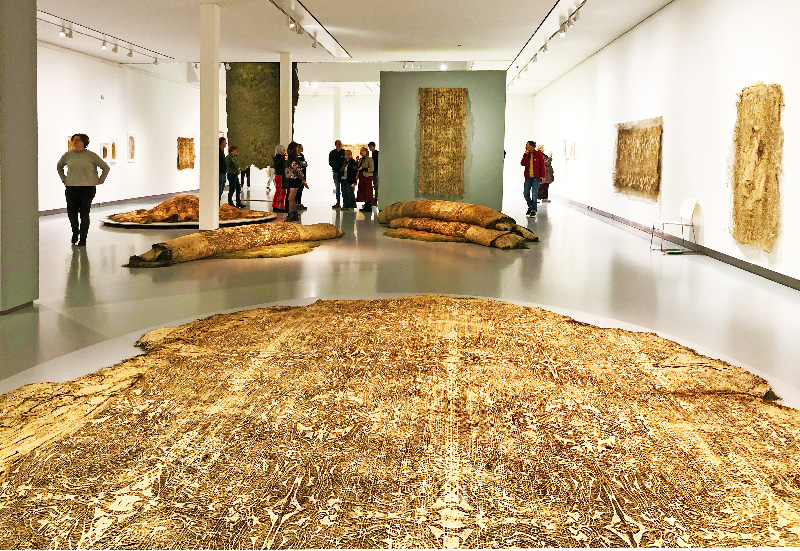
Diana Scherer: Farming Textiles
Exhibition in Museum Kranenburgh, Bergen, the Netherlands from October 1 to March 10, 2024
Diana Scherer is a visual artist living and working in Amsterdam. Born in Lauingen, Germany, she studied fine art at the Rietveld Academy in Amsterdam. Her exhibition is accompanied by a carefully made book “Interwoven – Exercises in Root System Domestication” (see details below) in which the artist explains her way of working. She employs a unique system with which, using natural growth processes, she creates mesmerizing and seemingly fragile tissues of plant roots with various structures, using digitally produced templates.
Under normal circumstances, this museum near my Dutch home village, is a quiet museum around the Bergen School of Painting. For this exhibition it was crowded with visitors coming from far to see the works made of roots, or better grown under the guidance of the artist!
I was surprised by the success this exhibition is having and the interest people showed in this creative collaboration between human and plant intelligence. It seems that art using the assistance of nature finds a great interest with the public!
I had heard of Diana Scherer since her work was shown in “A Labour of Love” by Lidewij Edelkoort & Fimmano , published in 2020. Before that she had taken part in the exhibition “Fashioned from Nature” in the V&A museum in London in 2017. Diana Scherer had already been using the hidden processes of plant roots since 2015 in her ongoing research project “Interwoven”, working together with four master students from the Materials Experience Lab from the Delft University of Technology who graduated on that project. Interwoven is a material grown directly by the plant roots. Due to human manipulation the roots grow into patterns designed by the artist with the help of templates.
The Material Experience Lab assisted in strengthening the material and perfect the design of the subterranean templates. Interwoven has been honored by the New Material Award 2016, a biannual prize organized by Het Nieuw Instituut Rotterdam, challenging artists and designers to develop sustainable materials and innovative technologies. Scherer has developed interwoven from Idea to material, grown dress-sculptures to large-scale installations
During my visit there were many questions from the public that were answered by a very kind museum employee: People wanted to know how fragile the work is and how long it can survive? The answer was that as long as the work is placed in a frame behind glass, it can survive like paper art without problems. The only danger is humidity which would let the piece fall apart sooner. Further many people asked about the templates the artist is using to direct the growing of the roots. Here the answer was restricted as the process seems to be a secret. But the patterns were described in detail, being imprints of bike and car tires and other imprints from daily practical tools plus special designed patterns created by the artist.
Because the researchers are saying that the templates are made digitally, and the fact the roots are not allowed to grow through the template (in which case the templates could not be separated from the soil) it seems logical to me that they are made from a waterproof material (plastic) that -is for example -3D printed or embossed.
For visitors to feel the material there was a small piece at the entrance of the exhibition, which was surprisingly stable even though it looked very fragile! A very poetical way of working between human creativity and plant intelligence with lace-like results that really were self-woven textiles. This fascination was not to be overlooked, adults and children alike were surprised and excited about this beautiful exhibition!
The catalogue -book “Excercises in Root System Domestication”, Jap Sam Books, Prinsenbeek, the Netherlands 2023, edited by Diana Scherer, Eleonoor Jap Sam and Mainstudio (Edwin van Gelder), 196 pages, price 39,95 Euro
Beatrijs Sterk , January 2024
